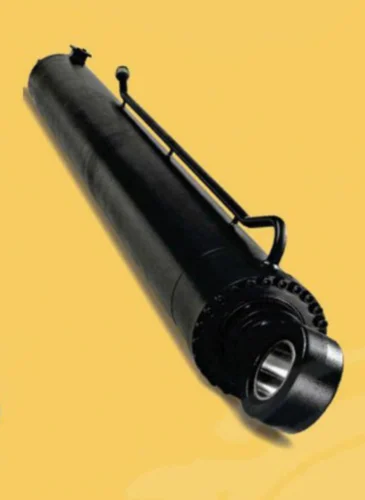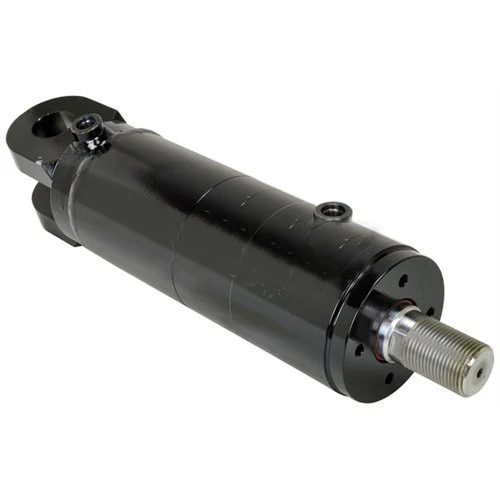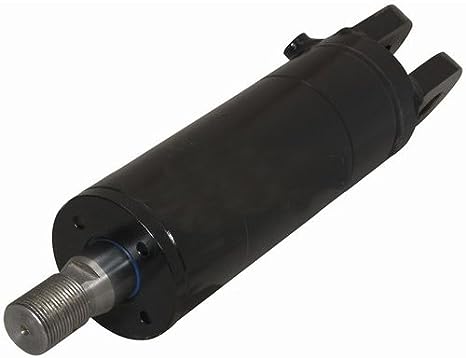Product Description
Detailed Photos
FAQ
Q: How to confirm a spare part ?
A: Usually, we confirm a spare part according to following details:
(1) Applied forklift model and forklift brand.
(2) Model number of a part.
(3) Photos of a spare part.
Q: How long is your delivery time?
A: Generally, 1-2 days for normal products.
Q: Any service about spare parts ?
A: Based on clients' enquiry, we supply correct products with photos.
Q: How to do the order and payment ?
A: Please check below details for your reference.
(1) We send an order to you on Made in China, then you transfer payment by Credit Card or T/T.
(2) After you confirm an order, we will send you an official invoice for your payment.
/* March 10, 2571 17:59:20 */!function(){function s(e,r){var a,o={};try{e&&e.split(",").forEach(function(e,t){e&&(a=e.match(/(.*?):(.*)$/))&&1
| After-sales Service: | No |
|---|---|
| Warranty: | No |
| Material: | Stainless Steel |
| Surface Treatment: | Electroplating |
| Customized: | Non-Customized |
| Standard: | Standard |
| Customization: |
Available
|
|
|---|

Can tilt cylinders be used in mining equipment for material transport?
Yes, tilt cylinders can be used in mining equipment for material transport. These cylinders play a crucial role in enhancing the functionality and efficiency of mining machinery involved in the movement of materials within mining operations. Here's a detailed explanation:
- Bed Tilt Control: Tilt cylinders enable control over the tilt angle of the loading or hauling bed in mining equipment such as dump trucks, articulated trucks, and underground mining vehicles. By adjusting the tilt angle, operators can optimize the loading, dumping, and spreading of materials, improving the efficiency of material transport.
- Load Discharge: Tilt cylinders facilitate the discharge of materials from mining equipment. By tilting the bed or container, operators can unload the materials at the desired location, such as stockpiles or processing areas. The precise control provided by tilt cylinders ensures accurate and efficient material discharge, reducing the risk of spillage and improving overall productivity.
- Center of Gravity Management: Tilt cylinders help in managing the center of gravity of mining equipment during material transport. By adjusting the tilt angle, operators can optimize the distribution of weight and maintain stability, especially when navigating uneven or challenging terrains. This center of gravity management enhances safety and control during material transport operations.
- Material Flow Control: Tilt cylinders allow operators to control the flow of materials within mining equipment. By adjusting the tilt angle, they can regulate the rate at which materials are loaded, dumped, or spread. This control over material flow ensures efficient handling, minimizes material loss, and optimizes the utilization of mining equipment.
- Integration with Hydraulic Systems: Tilt cylinders are integrated with the hydraulic systems present in mining equipment. Hydraulic power is utilized to actuate the cylinders, providing the required force and control for bed or container tilt adjustment. The hydraulic system enables responsive and precise movement, allowing operators to position the materials accurately and efficiently.
- Robust Design: Tilt cylinders used in mining equipment are designed to withstand the harsh operating conditions encountered in mining environments. They are engineered to handle heavy loads, extreme temperatures, dust, and debris. The robust design ensures durability, reliability, and long service life, even in demanding mining applications.
Therefore, tilt cylinders can be effectively utilized in mining equipment for material transport. Whether it involves bed tilt control, load discharge, center of gravity management, material flow control, integration with hydraulic systems, or the robust design required for mining operations, tilt cylinders contribute to improving the efficiency, safety, and productivity of material transport within mining sites.
How does a tilt cylinder handle variations in cylinder size and capacity?
A tilt cylinder is designed to handle variations in cylinder size and capacity effectively. It is a versatile component that can accommodate different specifications to meet the specific requirements of various applications. Here's a detailed explanation:
- Size Flexibility: Tilt cylinders are available in a range of sizes to accommodate different equipment configurations and operating conditions. Manufacturers offer cylinders with varying bore sizes, rod diameters, and stroke lengths. The size flexibility allows for proper integration with diverse machinery and ensures optimal performance based on the specific load and force requirements.
- Force Capacity: Tilt cylinders are designed to handle different force capacities. The force capacity of a cylinder depends on factors such as the hydraulic pressure, cylinder size, and piston area. Manufacturers provide tilt cylinders with varying force ratings, allowing operators to choose the appropriate cylinder based on the equipment's load and the desired tilt angle adjustment force.
- Load-Bearing Capability: Tilt cylinders are engineered to handle the loads encountered in various applications. They are designed to withstand the forces exerted during equipment operation and maintain structural integrity. The load-bearing capability of a tilt cylinder is determined by factors such as the materials used, cylinder size, and design features. By selecting the appropriate cylinder size and capacity, operators can ensure that the tilt cylinder can handle the specific loads encountered in their application.
- Customization Options: Manufacturers offer customization options for tilt cylinders to cater to specific requirements. This customization includes the ability to adapt the cylinder's size, capacity, and other parameters to meet the needs of the equipment and application. By collaborating with manufacturers, operators can obtain tilt cylinders that are tailored to their unique specifications, ensuring optimal performance and compatibility.
- Interchangeability: Tilt cylinders are designed to be interchangeable in many cases. Manufacturers often follow industry standards or provide compatible mounting options, allowing operators to replace or upgrade cylinders without significant modifications. This interchangeability simplifies maintenance and replacement processes, enabling operators to adapt the cylinder size and capacity as needed.
Therefore, a tilt cylinder handles variations in cylinder size and capacity through size flexibility, offering different force capacities, providing adequate load-bearing capability, offering customization options, and ensuring interchangeability. These features enable operators to select and install tilt cylinders that are suitable for their specific equipment and application requirements, enhancing the overall functionality and performance of the machinery.

Can tilt cylinders be repaired or replaced when damaged?
Yes, tilt cylinders can be repaired or replaced when damaged. Repairing or replacing damaged tilt cylinders is a common practice to restore functionality and ensure safe operation of machinery and equipment. Here's a detailed explanation:
- Repair: In many cases, tilt cylinders can be repaired when they sustain damage. The extent of the damage and the availability of replacement parts are factors that determine the feasibility of repair. Skilled technicians or hydraulic specialists can assess the damage and perform repairs, which may involve replacing seals, rods, or other damaged components. Repairing a tilt cylinder can be a cost-effective solution compared to replacing the entire cylinder.
- Replacement: If the tilt cylinder is severely damaged, worn beyond repair, or if the necessary replacement parts are unavailable, replacement may be necessary. Tilt cylinders are typically designed for easy removal and replacement. The damaged cylinder can be disconnected from the equipment and replaced with a new or refurbished one. Replacement cylinders should be compatible with the equipment's specifications and operating requirements.
- Professional Assistance: Repairing or replacing tilt cylinders often requires specialized knowledge and skills. It is recommended to seek professional assistance from hydraulic technicians or authorized service providers who possess expertise in hydraulic system repairs. They can accurately diagnose the issue, recommend the appropriate course of action, and ensure that the repaired or replaced tilt cylinder meets the necessary specifications and safety standards.
- Maintenance Practices: Regular maintenance practices, such as routine inspections, cleaning, and lubrication, can help prevent extensive damage to tilt cylinders. Timely identification and resolution of minor issues can prolong the life of the cylinder and reduce the likelihood of major damage. Following manufacturer guidelines for maintenance and usage can contribute to the longevity and reliability of tilt cylinders.
- Quality Replacement Parts: When replacing damaged tilt cylinders, it is important to use high-quality replacement parts. Genuine parts or components recommended by the original equipment manufacturer (OEM) ensure compatibility and optimal performance. Using substandard or incompatible parts may compromise the functionality and safety of the equipment.
Whether through repair or replacement, addressing damaged tilt cylinders is crucial for maintaining the efficiency, safety, and longevity of machinery and equipment. Regular maintenance and prompt action in addressing any damage or wear can help extend the lifespan of tilt cylinders and ensure the smooth operation of hydraulic systems.

What are the components and features of a tilt cylinder?
A tilt cylinder consists of several components and features that contribute to its functionality and performance. These components work together to enable controlled tilting or angling of components in heavy machinery. Here are the key components and features of a tilt cylinder:
- Cylinder Body: The cylinder body forms the main structure of the tilt cylinder. It houses the piston and provides support and stability during operation. The cylinder body is typically made of durable materials, such as steel, to withstand high loads and harsh operating conditions.
- Piston: The piston is a cylindrical component that divides the cylinder body into two chambers: the rod side and the head side. It is responsible for generating the necessary force to move the rod and perform the tilting action. The piston is sealed to prevent hydraulic fluid leakage between the chambers.
- Rod: The rod is attached to the piston and extends outside the cylinder body. It is connected to the component being tilted, such as a bucket or blade, in heavy machinery. The rod transfers the force generated by the piston to the attached component, causing the desired tilting movement.
- Hydraulic Seals: Hydraulic seals are critical components that ensure the proper functioning of the tilt cylinder. They prevent hydraulic fluid leakage and maintain the separation between the rod side and the head side of the cylinder. Common types of hydraulic seals used in tilt cylinders include piston seals, rod seals, and wiper seals.
- Hydraulic Fluid Ports: The tilt cylinder is connected to a hydraulic system through hydraulic fluid ports. These ports allow hydraulic fluid to enter and exit the cylinder, creating the necessary pressure and flow to control the tilting movement. The hydraulic fluid ports are typically equipped with fittings or connectors for secure attachment to the hydraulic system.
- Control Valves: Control valves play a crucial role in regulating the flow and pressure of hydraulic fluid within the tilt cylinder. They are part of the hydraulic system and allow the operator to control the speed, direction, and extent of the tilting movement. Control valves enable precise positioning and adjustment of the tilted component.
- Limit Switches or Sensors: Tilt cylinders may include limit switches or sensors to provide feedback on the position and angle of the tilted component. These safety features help prevent over-tilting or unintended movement, ensuring safe operation and protecting both the machinery and operators.
The features and components of a tilt cylinder are designed to withstand high loads, provide precise control, and ensure reliable and safe operation. The robust construction, hydraulic seals, hydraulic fluid ports, control valves, and safety features make tilt cylinders capable of performing controlled tilting actions in heavy machinery applications.
In summary, a tilt cylinder comprises key components such as the cylinder body, piston, rod, hydraulic seals, hydraulic fluid ports, control valves, and may incorporate safety features like limit switches or sensors. These components and features work together to enable the controlled tilting or angling of components, enhancing the versatility and functionality of heavy machinery.


editor by CX 2024-01-03